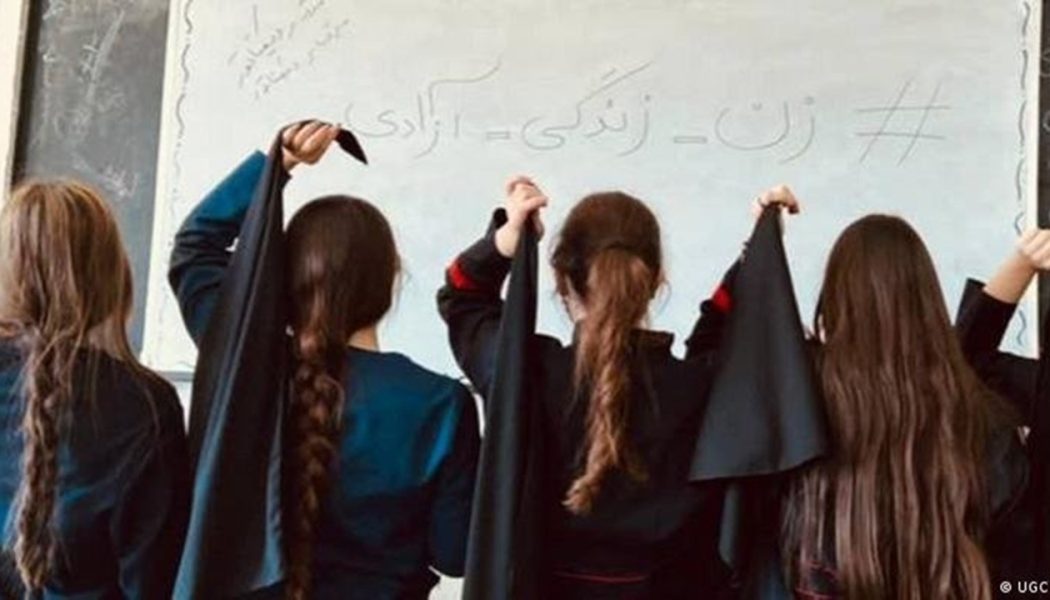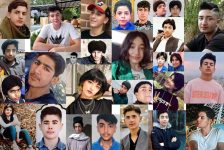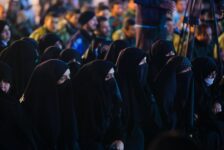Since March 8, 1979, Iran has been a battleground against the enforced wearing of the hijab. However, the recent uprising sparked by the death of Mahsa Amini in opposition to mandatory hijab laws signifies a significant shift. This generation of Iranian women and girls has shattered the taboo surrounding Islamic hijab, marking the beginning of a larger and more challenging battle. This battle aims not only to reclaim all civil rights and freedoms lost since the 1979 revolution but also to dismantle the misogynistic ideology entrenched in Iran’s governance, along with its supporting laws and regulations.
Iranian women had the liberty to decide whether or not to wear the hijab before the revolution of 1979. One facet of the civil liberties recognized in the nation was the freedom of dress, which promoted harmony among people who have different fashion preferences.
An important turning point was the historic event that took place in Tehran on March 8, 1979, International Women’s Day, following the Islamic revolution in Iran. This demonstration, which was mostly against the obligatory wearing of the headscarf for women in government posts, took place not long after Khomeini’s edict. Even though it was the biggest women’s protest in Iranian history, it brought attention to how women’s rights are marginalized and how alone they are in this protest inside Iranian society. When it came to women protesting the hijab, the majority of revolutionary forces at the time—from socialist and liberal to religious and secular groups—either disagreed with them or said nothing at all.
However, the ‘Women, Life, Freedom’ movement was successful in raising the voices of Iranian women around the world following forty five years of oppression and inequity. The movement gained national and international prominence very rapidly.
Central to this uprising were acts of defiance such as burning headscarves and publicly removing hijabs, symbolizing a collective rejection of oppressive policies. With the support of national uprising movements like Mahsa Amini, many Iranian men joined women in advocating for gender equality, challenging the entrenched religious and ideological tyranny of the government. ‘Woman, Life, Freedom,’ the movement’s catchphrase, takes aim at the Islamic authoritarianism that has ruled Iranian society for more than 45 years. This challenge has led even those who unwittingly supported the Islamic Republic’s goals to reassess their stance on women’s rights.
Following the protests in 2022, the struggle for freedom of choice regarding hijab emerged as a central theme. The hijab, often seen as a political tool wielded by the religious establishment, faced widespread resistance, posing a dilemma for the ruling powers in Iran.
In response, the government intensifies efforts to suppress women, resorting to various forms of coercion and punishment. Despite these measures, women continue their relentless resistance, signaling the resilience of their ongoing struggle against oppression.
The authorities resort to numerous tactics, including financial penalties, restrictions on access to public spaces, and crackdowns on dissent. However, these actions only serve to expose the government’s lack of legitimacy and the fragility of its political system.
The killing of Mahsa Amini by Morality Police sparked a national uprising and contributed to the regime’s continued instability. Even if the protests have become smaller in scope, the underlying unrest is still strong and ready to flare up again at any time.
The opposition to compulsory hijab legislation in Iran is a powerful challenge to the country’s deeply ingrained patriarchal political systems as well as a struggle for individual freedom of choice.
The recent uprising, catalyzed by the tragic death of Mahsa Amini, signifies a significant shift in the determination of Iranian women to reclaim their civil rights and dismantle oppressive ideologies. Despite facing relentless suppression and violence from authorities, the resilience of the “Women, Life, Freedom” movement underscores the unwavering commitment of Iranian women to assert their autonomy and demand fundamental change. As the momentum for reform persists, fueled by the collective voices of women and allies, the regime finds itself increasingly destabilized, with the potential for further upheaval looming on the horizon.
The ongoing struggle against enforced hijab laws serves as a poignant reminder of the enduring power of grassroots movements in shaping the course of history and heralds a future where gender equality and individual freedoms prevail.










